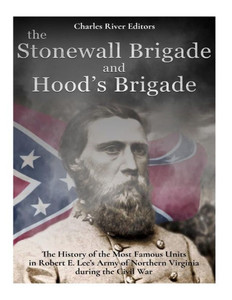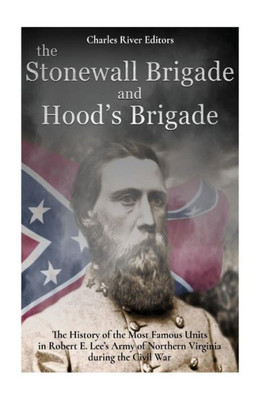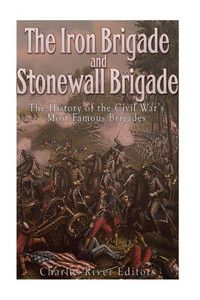*Includes pictures *Includes accounts of the battles *Includes a bibliography for further reading April 18, 1861 marked the date Southern forces started pouring into Harper's Ferry, Virginia. Six days earlier, shots had been fired at Fort Sumter in Charleston Harbor, South Carolina, marking the beginning of the Civil War, and Virginia officially seceded from the Union April 17. The following day, men arrived in the town where John Brown's attempted uprising was quelled less than two years earlier. The men came from all portions of the Confederate States of America (C.S.A.) and the border states of Kentucky and Maryland, but the preponderance of volunteers came from Virginia. Once the Confederate troops occupied Harpers Ferry, martial law was declared and so-called "feather bed" Confederate military officers, often referred to as "swells," were replaced by professional soldiers with military training. One such man who arrived from the Virginia Military Institute (VMI) was Thomas Jonathan Jackson, who on April 27 was ordered by Virginia Governor John Letcher to take control of the troops converging on Harpers Ferry. He did as ordered and began to form what became the renowned Stonewall Brigade. Jackson and his brigade earned the nickname "Stonewall" at First Manassas by turning the tide of that battle, and they would become known as the legendary foot cavalry by bottling up 3 different Union armies in the Shenandoah Valley in 1862. The Stonewall Brigade went on to fight in every major battle in the Eastern theater of the American Civil War, to the extent that of the 6,000 men who fought with the brigade over the course of four years, less than 200 remained by the time General Robert E. Lee surrendered at Appomattox Courthouse on April 9, 1865. They were organized, trained, and mentored by one of the most revered military leaders in American history, and they made a decisive impact on battles like First Manassas, the 1862 Valley Campaign, and Chancellorsville. The brigade was virtually a spent force by the end of the Battle of Spotsylvania Courthouse in May 1864, which took place nearly a year after Stonewall Jackson himself had been mortally wounded at Chancellorsville. Organized in Richmond, Virginia on October 22, 1861, Hood's Texas Brigade was one of the most formidable fighting forces of the Confederate States of America (C.S.A.) during the American Civil War. At times undisciplined, the men who comprised this brigade were a group of fearless and determined volunteers-turned-soldiers. Over the course of the Civil War, the Texas Brigade engaged over 4,000 men and was comprised of the only Texans to fight with General Robert E. Lee's Army of Northern Virginia in the Eastern Theater. With the exception of Chancellorsville, these men fought in every major battle in the East, and they also participated in significant battles in the Western Theater. Of the more than 4,000 men who fought with the brigade over the course of the war, approximately 600 remained to surrender at Appomattox. The brigade suffered a horrific casualty rate of sixty-one percent and were lauded for their courage by men such as generals Thomas "Stonewall" Jackson, James Longstreet, and Lee. It is estimated that 56,000 Texans served in the Confederate Army during the Civil War, yet the approximately 4,000 men, organized into 32 companies, that formed the Texas Brigade were the only Texans who fought in both theaters of operation. They have been compared to the famous Stonewall Brigade in terms of bravery, skill, and fortitude, and naturally, their fighting directly contributed to the outcome of crucial battles like Antietam and Gettysburg. As a result, they helped change the course of history.
- | Author: Charles River Charles River Editors
- | Publisher: Createspace Independent Publishing Platform
- | Publication Date: Dec 19, 2017
- | Number of Pages: 148 pages
- | Language: English
- | Binding: Paperback
- | ISBN-10: 1981864423
- | ISBN-13: 9781981864423






